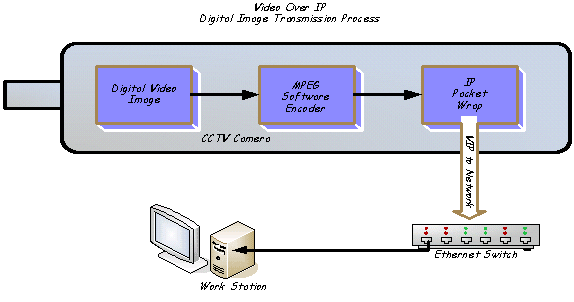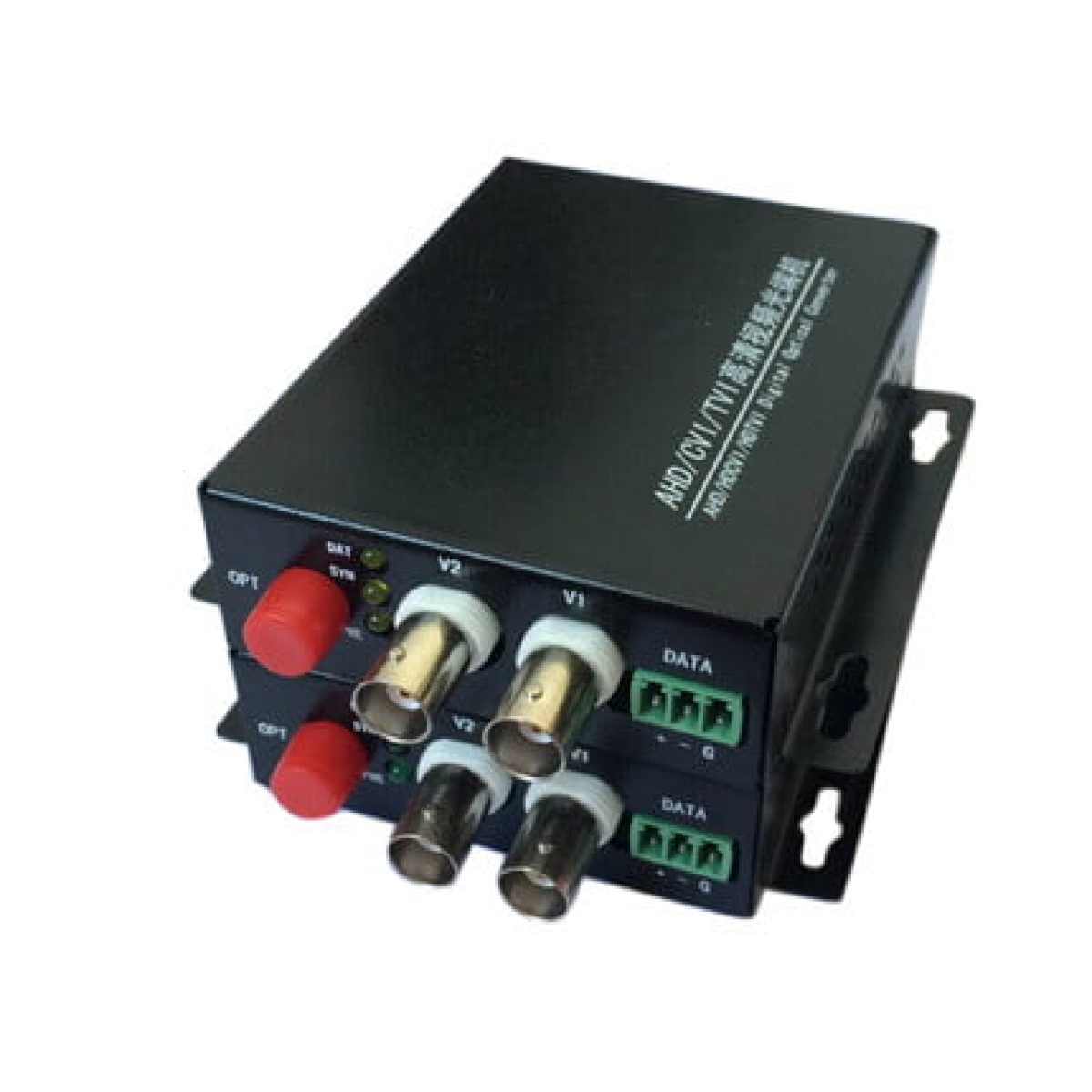Exactly How CCTV Cameras With Fiber Optic Outcome Improve Long-Distance Tracking
CCTV cameras geared up with fiber optic result represent a significant innovation in long-distance surveillance technology, supplying unmatched benefits over typical systems. By leveraging the homes of light transmission through optical fiber, these cams make sure high-def video quality continues to be undamaged across comprehensive distances while efficiently mitigating electro-magnetic interference. This technology not just enhances photo clarity yet likewise enhances setup processes and source allotment. As we check out the ramifications of this modern technology, one must consider exactly how these improvements are improving the landscape of security and tracking systems in different applications.

Recognizing Fiber Optic Innovation
Fiber optic innovation is increasingly utilized in long-distance surveillance applications as a result of its phenomenal ability for data transmission. This technology uses slim strands of glass or plastic fibers to transfer data as light signals, dramatically lowering the depletion typically connected with traditional copper wires. The intrinsic residential properties of fiber optics enable the transmission of huge volumes of data over significant distances without loss of top quality, making it an optimal choice for applications requiring trusted interaction.
The concept of complete internal representation assists in the effective transmission of light within the fiber, ensuring high transmission capacity and speed. Unlike electrical signals in steel cords, fiber optics are immune to electro-magnetic interference, improving the stability of information transmission. This characteristic is particularly useful in environments with high degrees of electrical sound, such as industrial setups or urban locations.
Additionally, fiber optic cords are lighter and extra versatile than their copper equivalents, which simplifies installment and decreases architectural lots. With their toughness and resistance to ecological elements, optical fiber are appropriate for outdoor applications, therefore expanding the reach of checking systems. Because of this, fiber optic technology is coming to be a foundation in modern monitoring options, successfully resolving the obstacles of long-distance monitoring.
Benefits of Fiber Optic CCTV
Using fiber optic modern technology in CCTV systems offers various advantages that improve monitoring capacities. Among the key advantages is the ability to transmit high-definition video over fars away without considerable signal deterioration. Unlike typical copper wires, optical fiber can maintain video clip top quality over extensive runs, making them perfect for large residential properties or remote surveillance locations.
In addition, fiber optic wires are much less susceptible to electromagnetic disturbance, which can distort signals in standard systems. This makes certain more clear photos and nonstop solution, critical for safety and security tracking. Additionally, optical fiber are naturally extra secure, as intercepting signals requires specific devices, hence giving an added layer of security versus unapproved gain access to.
The lightweight and compact nature of fiber optic cable televisions also streamlines installment, enabling easier routing through tight spaces and decreasing overall labor prices. Their sturdiness makes them resistant to ecological elements such as moisture and temperature changes, prolonging the lifespan of the security system.
Lastly, fiber optic systems can sustain a higher number of electronic cameras on a single network, maximizing sources and using scalability for future development. These advantages make fiber optic CCTV systems a remarkable choice for modern surveillance needs.
Comparison With Conventional Solutions
When comparing CCTV systems, traditional arrangements frequently fall short in a number of key areas, specifically in terms of range and signal stability. Standard coaxial cable television systems typically deal with significant signal destruction over long ranges, restricting efficient monitoring varies to approximately 300 feet (cctv fibre optic cable). Yet threshold, image clearness diminishes, resulting in prospective unseen areas and reduced monitoring efficiency
In contrast, fiber optic systems maintain signal honesty over a lot higher distances, commonly exceeding several miles without loss our website of quality. This is mostly due to their capability to transmit information as light signals, which are less at risk to electro-magnetic interference than electric signals used in conventional systems.
In addition, standard systems need extra comprehensive upkeep and troubleshooting as a result of their vulnerability to ecological aspects such as wetness and electro-magnetic sound. Fiber optic systems, on the other hand, offer enhanced sturdiness and lower maintenance costs, as they are less susceptible to damages.
Applications in Long-Distance Monitoring
The benefits of modern CCTV systems in preserving signal integrity over lengthy ranges open a large range of applications for long-distance tracking. One substantial application is in city surveillance, where municipalities deploy fiber optic CCTV systems to keep track of public spaces, improving security and discouraging criminal task. These systems supply constant, high-grade video feeds that are essential for effective law enforcement and emergency situation feedback.
An additional important application remains in commercial setups, where remote tracking of producing procedures and dangerous areas is necessary. Fiber optic CCTV can withstand harsh atmospheres and transfer data over cross countries without loss of top quality, enabling real-time oversight and decreasing threats to employees.
Furthermore, critical facilities such as airports, railways, and pipes benefit from long-distance CCTV tracking. Safety and security teams can supervise large areas from systematized control areas, ensuring rapid response to any type of cases.
In addition, in agricultural settings, farmers utilize long-distance CCTV to keep track of plants and livestock, aiding to improve productivity and security. On the whole, the adaptability and reliability of fiber optic CCTV systems make them important across numerous sectors, allowing extensive monitoring services tailored to details needs.
Future Fads in Security Modern Technology
Just how will developments in innovation improve the landscape of surveillance? The future of monitoring modern technology is positioned for substantial change, driven by innovations such as man-made knowledge (AI), artificial intelligence, and side computing. These technologies allow real-time information evaluation, permitting for quick identification of potential dangers and boosted situational understanding.
AI-powered analytics will certainly improve the precision of facial acknowledgment systems, reducing incorrect positives and enabling a lot more reliable tracking of people. Additionally, the assimilation of Internet of Things (IoT) devices will certainly facilitate a seamless network of interconnected security systems, enhancing tracking capacities across substantial areas.
Another trend is the change in the direction of cloud-based storage space remedies, which supply scalable information monitoring great post to read and ease of access. This navigate to this site will certainly allow companies to store substantial amounts of video clip data without the constraints of physical storage, while making sure that information is quickly retrievable.

Conclusion
Finally, CCTV electronic cameras outfitted with fiber optic outcome represent a substantial improvement in long-distance surveillance capacities. The application of fiber optic technology ensures high-def video clip transmission over extensive distances without high quality destruction, while additionally providing immunity to electromagnetic interference. The lightweight and versatile nature of these systems facilitates structured installment and source optimization. As security modern technology remains to evolve, the fostering of fiber optic options will likely play a crucial duty in improving safety throughout diverse applications.